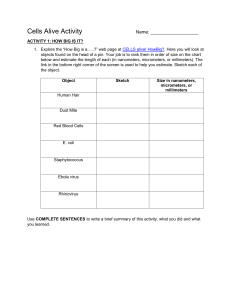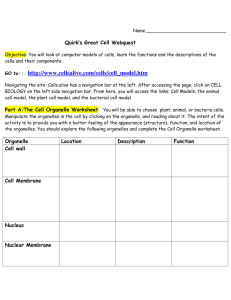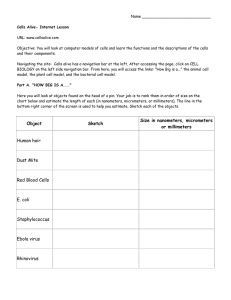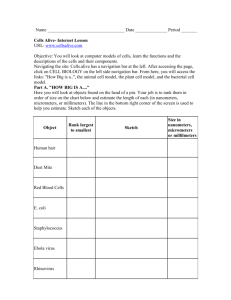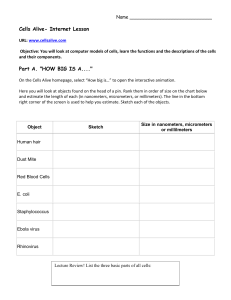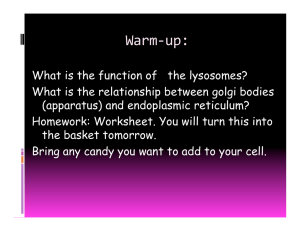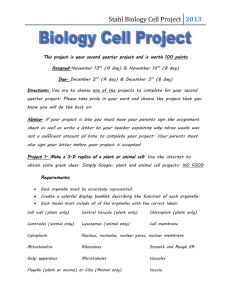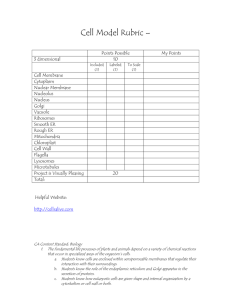Cells Alive Activity
advertisement
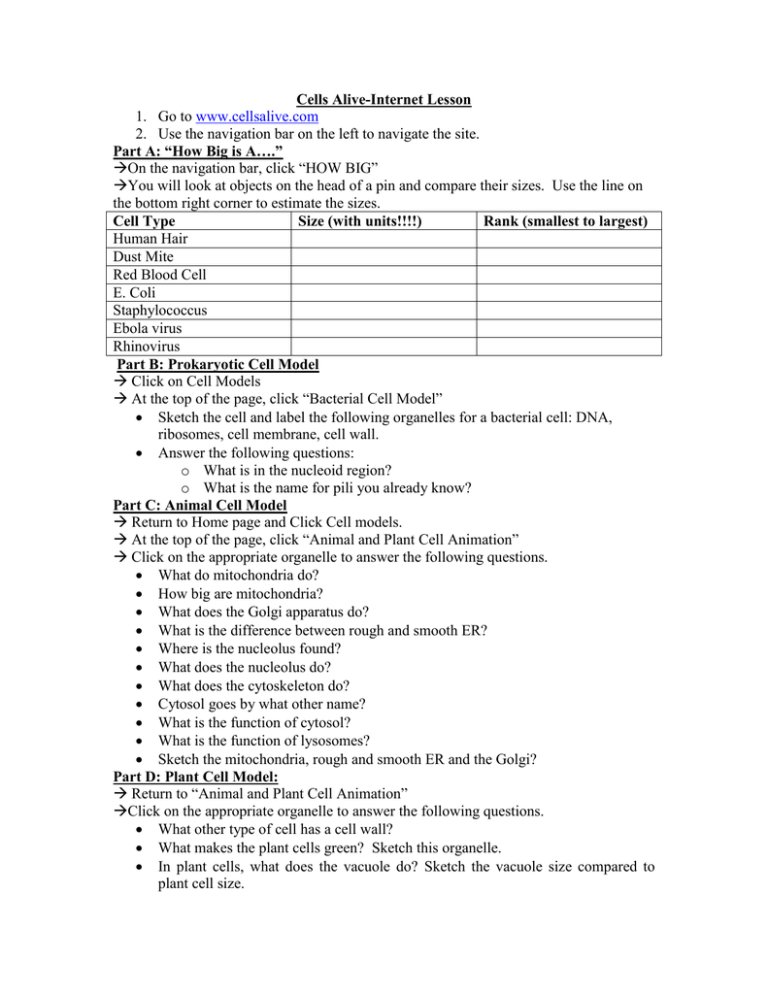
Cells Alive-Internet Lesson 1. Go to www.cellsalive.com 2. Use the navigation bar on the left to navigate the site. Part A: “How Big is A….” On the navigation bar, click “HOW BIG” You will look at objects on the head of a pin and compare their sizes. Use the line on the bottom right corner to estimate the sizes. Cell Type Size (with units!!!!) Rank (smallest to largest) Human Hair Dust Mite Red Blood Cell E. Coli Staphylococcus Ebola virus Rhinovirus Part B: Prokaryotic Cell Model Click on Cell Models At the top of the page, click “Bacterial Cell Model” Sketch the cell and label the following organelles for a bacterial cell: DNA, ribosomes, cell membrane, cell wall. Answer the following questions: o What is in the nucleoid region? o What is the name for pili you already know? Part C: Animal Cell Model Return to Home page and Click Cell models. At the top of the page, click “Animal and Plant Cell Animation” Click on the appropriate organelle to answer the following questions. What do mitochondria do? How big are mitochondria? What does the Golgi apparatus do? What is the difference between rough and smooth ER? Where is the nucleolus found? What does the nucleolus do? What does the cytoskeleton do? Cytosol goes by what other name? What is the function of cytosol? What is the function of lysosomes? Sketch the mitochondria, rough and smooth ER and the Golgi? Part D: Plant Cell Model: Return to “Animal and Plant Cell Animation” Click on the appropriate organelle to answer the following questions. What other type of cell has a cell wall? What makes the plant cells green? Sketch this organelle. In plant cells, what does the vacuole do? Sketch the vacuole size compared to plant cell size.
